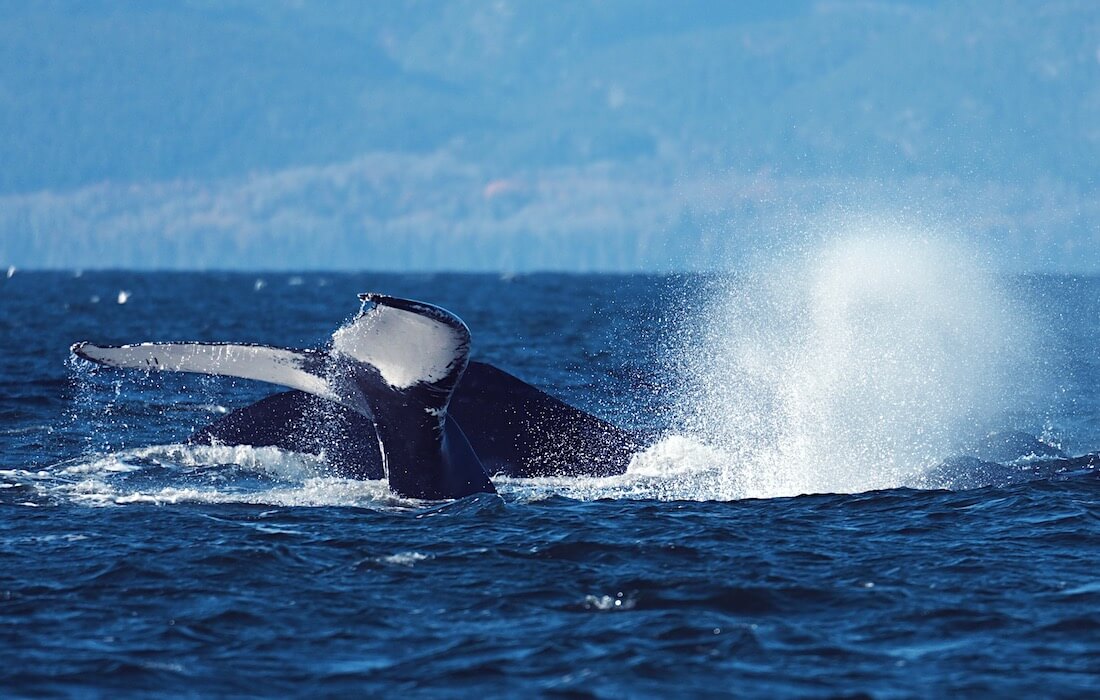Several research teams made their inaugural trips of the season in the Estuary and Gulf of St. Lawrence in recent weeks. We encourage you to follow these teams throughout the season on Whales Online and via the social networks.
The Mingan Island Cetacean Study (MICS) team made its first foray on 10 June, off of Cap Gaspé. Based in Longue-Pointe-de-Mingan in the Côte-Nord region and founded in 1979 by Richard Sears, MICS is a non-profit organization dedicated to the study of marine mammal ecology. MICS conducts long-term studies on blue, fin, humpback, and minke whales. Today the organization’s work area extends beyond the St. Lawrence, notably in the Sea of Cortez in Baja California, in the waters of Iceland and in the Azores. You can follow MICS on Facebook, Twitter and Instagram.

Both volunteer research assistants from the Group for Research and Education on Marine Mammals (GREMM) began the large rorqual photo-census in the Saguenay-St. Lawrence Marine Park. This census will take place from June 5 to September 18 from the ports of Tadoussac, Les Bergeronnes and Les Escoumins. Already, seven different fin whales were caught by the research assistants’ cameras. Recognized among them were Bp913 and Bp942 (whose ID descriptions can be consulted in the Large Rorqual Catalogue), as well as Bp918 and Bp945, two fin whales that were present in the Marine Park last year. As for the remaining three animals, we will have to wait until fall and more in-depth lab work to see whether or not these individuals are familiar.
Two other research projects – the beluga behavioural study and the large rorqual tagging project – will begin in late June.

The beluga behavioural study is being led by the GREMM. Every summer since 1985, the GREMM team spends hundreds of hours at sea with belugas in order to compile observation records of “known” individuals. Researchers study the relationships between the belugas’ social organization and their habitat use. They aim to determine how this organization influences their exposure to anthropogenic threats in an effort to identify limiting factors to the recovery of their population. Through a combination of genetic data and observation records of photo-ID’d individuals, researchers study the fundamental biological characteristics of the beluga population as well as the influence of genetic characteristics on individuals’ health, mortality and reproductive success. On-the-water monitoring of belugas is one of the components of the St. Lawrence Beluga Project, a multidisciplinary research program led by a consortium of private and university research laboratories. You, too, are invited to track belugas throughout the season by reading the “With the Belugas” Field Notes, which will be published on Whales Online beginning in late June.
The large rorqual tagging project is being piloted by Fisheries and Oceans Canada in partnership with the GREMM and Parks Canada. The aim of the project, which is about to enter its 5th year, is to document the diet of whales (the where, when and how) in the Marine Park. To track whales under the water’s surface, researchers use radio telemetry. The team on board the Bleuvet approaches the animal and places the tag using either a pole or a crossbow. The tag adheres to the back of the animal thanks to a suction cup. It then falls off on its own in less than 24 hours, floats and is recovered, data are downloaded, and the tag is reused for another survey. In parallel with the telemetric monitoring, the Parks Canada team conducts acoustic prey surveys on board L’Alliance. You can check out the progress of the 4th season of the large rorqual tagging project and you can follow the fifth season this summer on Whales Online!

One research project on contact calls between beluga mothers and their calves – which follows a pilot project carried out last fall and led by researcher Valeria Vergara from the Vancouver Aquarium in collaboration with the GREMM team – will begin in mid-July.
Additionally, in September, for a 4th consecutive year, belugas will undergo pregnancy tests to determine whether the proportion of female belugas expecting young is comparable to the ratio that might be expected in a healthy population. This project is being led by Véronique Lesage of Fisheries and Oceans Canada, in collaboration with the GREMM, Saint Mary’s University in Nova Scotia and Florida Atlantic University’s Harbor Branch Oceanographic Institute.





